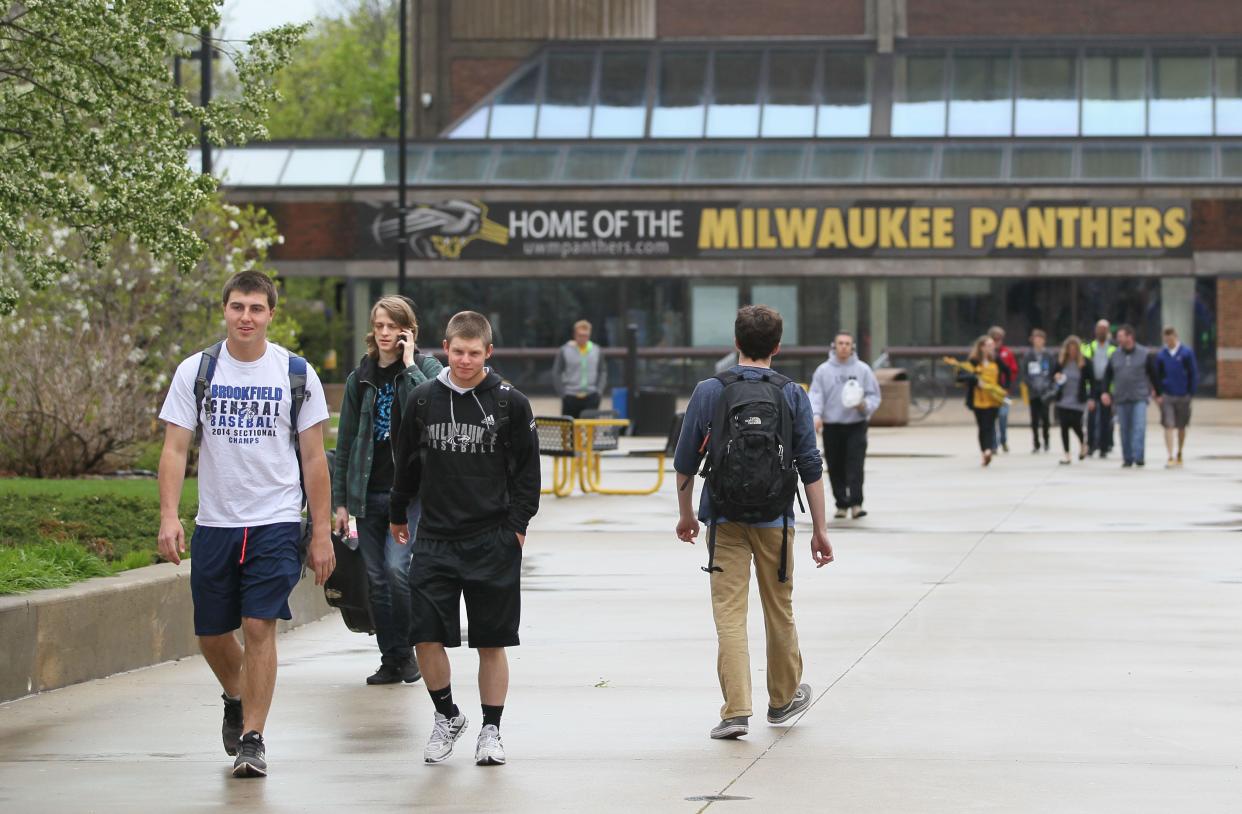UW-Milwaukee launches its own tuition promise program for low-income students

Incoming University of Wisconsin-Milwaukee students who come from households earning less than $62,000 will have their tuition and fees completely covered under a new tuition promise program launching next fall.
A similar statewide program already started this fall across all UW System campuses. But the Republican-controlled Legislature declined to provide money that would have extended the Wisconsin Tuition Promise program beyond the first cohort of students.
UW-Milwaukee announced Tuesday it would launch its own Milwaukee Tuition Promise program, extending the benefits of the program to at least one more class of students.
Between 1,000 and 1,500 students are expected to benefit.
UWM plays the largest role in the UW System in educating low-income students. Of the more than 30,000 UW System students who receive a Pell grant, about one in every five attend UWM.
Making more affordable will not only help students stay on track to earn a degree, but could reverberate across the state economy by training more workers in fields desperately trying to fill shortages, such as nursing.
"This is a big day for us," UWM Chancellor Mark Mone told the Milwaukee Journal Sentinel.
How does the Milwaukee Tuition Promise program work?
The program operates as a last-dollar award. It takes advantage of existing state and federal money already available to low-income students, such as Pell grants and scholarships, and covers the remaining balance.
For example, of the nearly 1,500 enrolled in the promise program this fall, 922 were already full funded through Pell grants and other aid.
The power of the program is in its messaging. Financial aid can be confusing, especially for low-income and first-generation students who rely on multiple sources of aid.
"This opens the doors and hopefully is much clearer to students from the state of Wisconsin that college is viable," said Kay Eilers, associate vice chancellor for enrollment management at UWM. "There is an option for you even if you’re from a background that doesn't have significant financial means (and) that there is a pathway to a college degree."
How much will Milwaukee Tuition Promise cost UWM?
The Milwaukee Tuition Promise will cost roughly $2.5 million for the first year of the program.
UWM is using donations and private funding sources to fund the program. That's how Assembly Speaker Robin Vos, R-Rochester, suggested state universities continue the program.
Does funding the program with private resources shut the door on future state money to support promise programs?
Not necessarily, Mone said.
"At this point, in the short term, we’re just trying to be pragmatic about it," he said. Operating a promise program to just one class of students created questions about fairness.
"That sense of ‘gosh, that group got it and I didn’t,’ that kind of put us in a situation" where UWM tried to find a way to extend the program further, Mone said.
"I hope the Legislature would see the value in this and social mobility for all in our state to have access to these types of resources," he said.
Will the Milwaukee Tuition Promise program be a long-term program?
UWM is actively fundraising to continue the program to future incoming classes, Mone said.
"Going forward, we feel pretty optimistic that we can continue this," he said. "There’s no guarantee. We don’t know that, but our future fundraising efforts will be aimed at this."
UWM is coming off its second best fundraising year, raising $35.6 million from donors.
How does the program help UWM?
The Milwaukee Tuition Promise may encourage more students to enroll. That would be a boon for UWM, which has suffered enrollment declines every year since 2014.
The program may also help more students stay in school, and eventually graduate. Retention is a "vexing problem" at campuses across the country and even more so since the pandemic.
About 28% of last year’s freshmen didn’t return this year, which translates to $16 million in lost revenue. Just over 30% of new freshmen graduate in four years and less than 50% finish their degree in six years.
"It’s a two-way street," Mone said. "We promise to support you. You, in effect, promise to stay in college. We really want to see that graduation rate increase."
Do tuition promise programs work?
Milwaukee Area Technical College launched a promise program in 2015, guaranteeing two years of tuition coverage for urban and suburban Milwaukee high school students. The program is funded through private donations to the college's foundation.
A recent study found the program increased enrollment from 10% to 15% of Milwaukee high school graduating seniors. The team of researchers found about half of the increase came from students who would have otherwise not attended college, and the rest came from students who diverted their plans to enroll at a different school and enrolled instead at MATC.
According to study estimates, MATC's program did not kick in additional money for the vast majority of qualifying students whose economic situations already meant their costs would be covered entirely by state and federal aid.
The power of the program, and of all tuition promise programs, is in clear messaging that cuts through the "opacity of the financial aid system," the researchers wrote.
Which Wisconsin schools already offer a tuition promise program?
College Promise, a nonprofit that advocates making the first two or more years of college free, identified 19 promise programs in Wisconsin, including most technical colleges.
Among four-year schools, UW-Madison launched its Bucky's Tuition Promise program in 2018; some private schools — Lakeland College and Carthage College — have also launched programs.
Contact Kelly Meyerhofer at [email protected]. Follow her on Twitter at @KellyMeyerhofer.
This article originally appeared on Milwaukee Journal Sentinel: UW-Milwaukee launches tuition promise program for low-income students
Solve the daily Crossword

